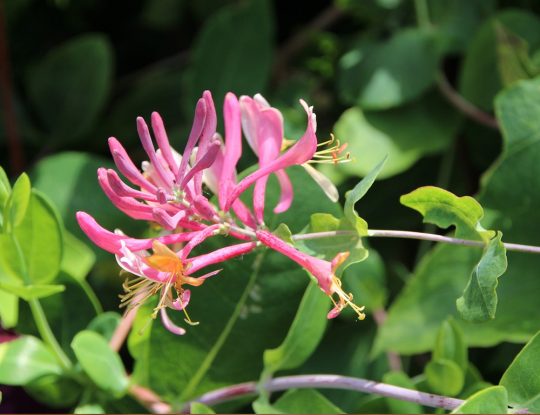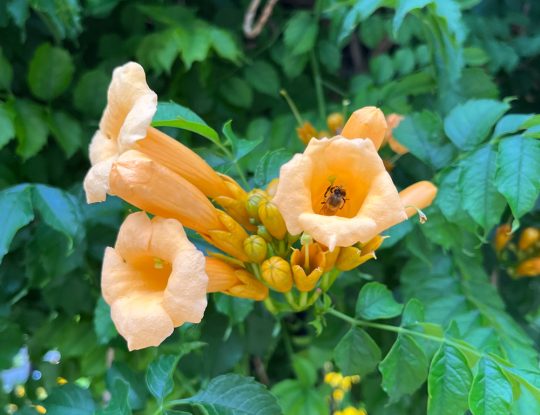Take advantage of your vertical space by adding a perennial vine. Fort Collins Nursery has great options to choose from including these flowering favorites:
Clematis

Clematis vines are a real jack-of-all-trades when it comes to landscape uses. Their adaptability and beautiful flowers in colors of white, pink, red, blue, or purple have made them a favorite of gardeners everywhere. Their affinity for climbing makes them a perfect choice for filling in vertical spaces on fences, porches, arbors and trellises. Though clematis can be allowed to scramble through shrubs or along a stone wall, they perform best when trained up a trellis, obelisk, arbor or other structure. Some varieties can also be trained to spread horizontally along the ground to provide cover and spread in horizontal spaces. Shorter varieties can fill in gaps around trees and shrubs and provide bursts of beautiful color. Many varieties can even be successfully grown in containers.
Clematis prefer moist (but not saturated) cool soil and like to have their roots shaded with a groundcover, small bushy perennial, or mulch. The plants and flowers can take full sun and generally require at least 6 hours per day. Because clematis are deep-rooted, it is important to water thoroughly and regularly. They are a relatively easy plant to grow and will get larger and stronger each year.
Honeysuckle Vines

Honeysuckle vines are characterized by long, trumpet-shaped flowers in bright red, pink, yellow, and orange colors. They can be shrubby or climbing and vining and are easily trained to climb up a trellis or other support. They’re often planted to cover unsightly walls and create privacy screens and beautiful flowered arbors. They can also be left to trail along the ground. Their attractive flowers and fragrant scent make them a favorite of hummingbirds and humans alike!
Honeysuckles appreciate moist soil with adequate drainage. If your soil is heavy or has poor drainage, consider making a large raised berm to plant them in. They will grow in both full sun and light shade, however you’ll get more blooms if you plant in a location with six hours of sunshine per day. Many honeysuckle varieties prefer to have their roots shaded. Placing mulch at the base of your vines, planting low-growing ground cover plants around the base, or tucking the vine in behind another shrub are all nice options for shading the roots.
Trumpet Vine

Trumpet vine is a high-climbing woody vine with glossy, dark-green leaves and clusters of trumpet-shaped flowers in shades of red, orange, and yellow that are very attractive to hummingbirds and other pollinators. It is popular for its ability to quickly cover trellises, garden gates, fences, and arbors in lush green vines and colorful blooms. Given sufficient space, it can also be used as a groundcover that will control erosion, thanks to its thick, fibrous roots. Trumpet Vine is an aggressive spreader but with adequate care and pruning, trumpet vines can be kept under control. Planting it near concrete will limit its spreading options and planting it where the grass is mowed will enable you to mow down its suckers and discourage growth. It should not be allowed to climb on your home or any structure near a house as the vines can quickly spread and damage wood, stone, brick, and stucco. It should not be allowed to climb trees either, as this can lead to strangulation
Trumpet Vines can adapt to a wide range of soil types but they prefer soils that are moist but well-drained. They thrive on neglect, preferring poor soil to rich, organic soil. Planting in soil with excess nutrients tends to put on too much green leafy growth, and the vine won’t focus on flowering. Trumpet vines can grow in full sun to partial shade, however at least six hours of direct sunlight per day will produce the best flowering. Trumpet Vines have good drought tolerance and in general only need watering when there are obvious signs of wilt.
Originally published on May 31st, 2023. Updated on June 4th, 2024.
